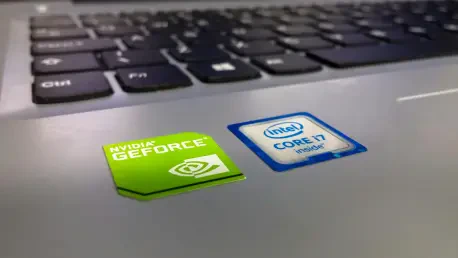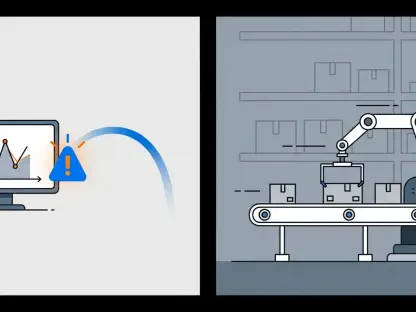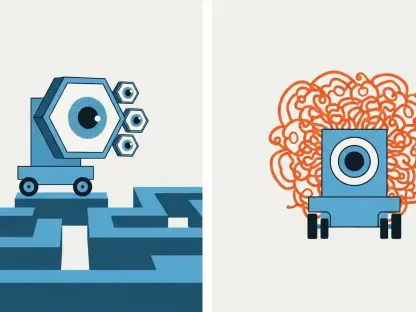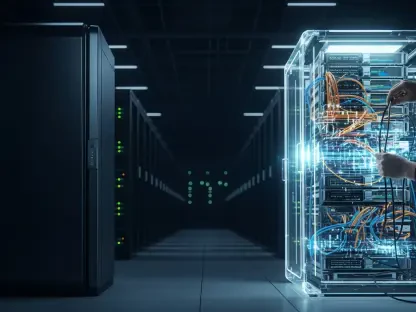In the rapidly advancing realm of artificial intelligence, a groundbreaking development has emerged from Nvidia that could redefine how machines learn to think, promising a significant shift in training methodologies. Known as Reinforcement Learning Pre-Training (RLP), this innovative technique integrates reinforcement learning into the earliest stages of training for large language models (LLMs), challenging the conventional approach of delaying such methods until later fine-tuning phases. The promise of RLP lies in its ability to instill deeper, more autonomous reasoning skills in AI systems from the very beginning, potentially leading to more robust and adaptable models capable of tackling intricate real-world problems. Unlike traditional methods that separate basic learning from complex reasoning, this approach seeks to emulate human-like comprehension by blending learning and critical thinking simultaneously. By fostering internal thought processes before predictions are made, RLP sets a new standard for AI training, raising intriguing questions about the future of intelligent systems and their applications across industries.
Redefining AI Development with Early Reasoning Integration
The traditional framework for training large language models has long adhered to a sequential structure, where pre-training focuses solely on fundamental tasks like next-word prediction, while reasoning abilities are developed in subsequent stages through supervised fine-tuning or human feedback. Nvidia’s researchers have identified a critical flaw in this linear progression, noting that it fails to reflect the integrated way humans process information by combining new data with existing knowledge in real time. RLP introduces a transformative solution by embedding a reasoning mechanism during the pre-training phase, enabling models to construct internal chains of thought before generating outputs. This early focus on reasoning aims to build a foundation for more advanced problem-solving skills, ensuring that AI systems are not merely reactive but capable of nuanced understanding from the outset. The shift challenges long-held assumptions about AI training timelines and suggests a more holistic approach to machine learning.
At the core of RLP is a sophisticated process that leverages vast, unstructured web data to train models, encouraging them to generate internal reasoning before making predictions. An automated reward system plays a pivotal role by assessing whether these generated thoughts enhance prediction accuracy compared to a baseline without such reasoning steps. This self-reinforcing mechanism allows the model to learn when deeper analysis is warranted versus when a straightforward response is sufficient, cultivating a balanced and context-sensitive learning style. Unlike conventional methods that often depend on curated datasets or external validation in later stages, RLP operates independently of such constraints, making it both innovative and practical. This approach not only streamlines the training process but also aligns more closely with the dynamic nature of human cognition, where thinking and learning are inseparable. The implications of such a system extend beyond technical advancements, hinting at a future where AI can adapt more naturally to diverse challenges.
Demonstrating Success Through Performance and Versatility
Extensive testing by Nvidia’s team has revealed the remarkable potential of RLP, with experiments conducted on models such as Qwen3-1.7B and Nemotron-Nano-12B showcasing substantial improvements in reasoning-intensive tasks. Across various benchmarks in math and science, RLP-trained models achieved performance gains of up to 35% over those trained with traditional methods, even when the latter utilized significantly larger datasets. This striking outcome underscores that the strength of RLP lies not in brute computational force but in its methodological innovation, offering a more efficient path to enhanced AI capabilities. Such results highlight the possibility of achieving superior outcomes with fewer resources, a critical consideration in an era where training costs continue to escalate. The data paints a compelling picture of RLP as a catalyst for smarter, more effective AI systems that prioritize quality of learning over sheer quantity of input.
Beyond raw performance, the scalability of RLP across different model architectures further solidifies its value. When applied to hybrid structures like the Mamba-Transformer-based Nemotron-Nano-12B, the technique consistently outperformed heavily trained baselines while consuming a fraction of the data. Additionally, the advantages of RLP persist through later training phases, with models demonstrating 7-8% higher overall scores after fine-tuning and showing resilience against catastrophic forgetting—a persistent issue where models lose earlier skills during subsequent training. This adaptability to diverse frameworks and sustained improvement over time points to RLP’s potential as a universal enhancement to AI training protocols. By proving effective across varied systems, RLP not only addresses current limitations but also sets a precedent for future developments in creating more durable and flexible AI solutions tailored to a range of applications.
Practical Applications and Forward-Looking Perspectives
The enhanced reasoning capabilities of RLP-trained models hold immense promise for enterprise environments where complex, multi-step processes are commonplace. Fields such as financial analysis, legal document summarization, and strategic planning could see marked improvements in accuracy and coherence of outputs, as these models are designed to internalize consistent reasoning patterns during pre-training. Bryan Catanzaro, a key figure at Nvidia, emphasizes that this early embedding of logical thought may reduce subtle errors in extended workflows, a significant advantage for industries reliant on precision. However, the importance of maintaining standard safeguards, including human oversight and verification mechanisms, cannot be overstated to ensure reliability in practical deployments. The intersection of advanced AI reasoning with real-world utility suggests a future where technology supports intricate decision-making with greater confidence, provided appropriate checks remain in place.
Looking toward the horizon, RLP represents a broader evolution in AI training paradigms, shifting away from a singular focus on predictive tasks to a more integrated model that combines multiple learning objectives from the start. Catanzaro offers a thought-provoking analogy, suggesting that while conventional training teaches models to observe the world, RLP equips them to think critically about their observations. This dual approach could pave the way for AI systems that are not only more intelligent but also more inquisitive, capable of evolving through active learning processes. Although the high costs of large-scale pre-training remain a challenge, RLP introduces an efficient and creative method to maximize performance gains. As research into reinforcement learning dynamics progresses, this technique could fundamentally alter how models develop reasoning skills, opening new dimensions for scalability in both model sophistication and learning methodologies.
Reflecting on a Milestone in AI Innovation
Reflecting on Nvidia’s journey with Reinforcement Learning Pre-Training, it becomes evident that a significant milestone has been reached in enhancing the reasoning prowess of large language models. By embedding critical thinking into the earliest training stages, RLP redefined the learning process to align more closely with human cognitive patterns, achieving impressive performance uplifts in complex tasks. Its ability to scale across diverse architectures while maintaining efficiency underscored a leap forward in AI development. For enterprises, the reduction in logical errors during intricate workflows offered practical benefits, balanced by the necessity of ongoing human supervision. As the AI community continues to explore reinforcement learning’s nuances, the groundwork laid by RLP points to actionable next steps: refining training efficiency, expanding application domains, and ensuring ethical deployment. This advancement not only reshapes technical approaches but also sparks vital discussions on building smarter, more responsible AI for the challenges ahead.









